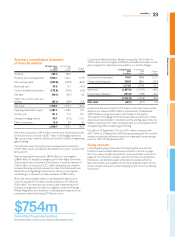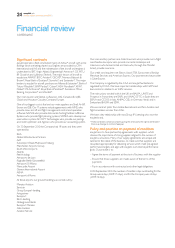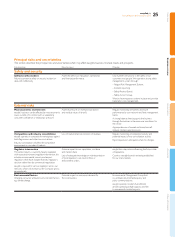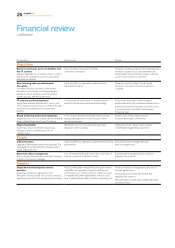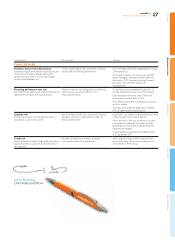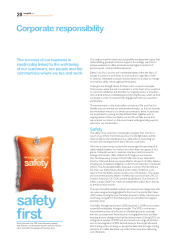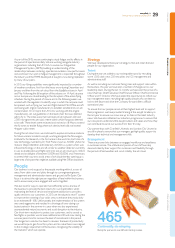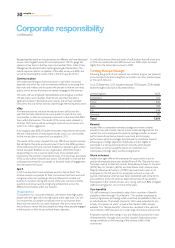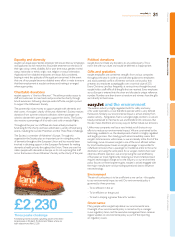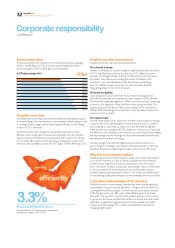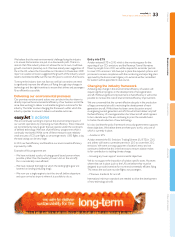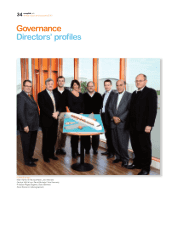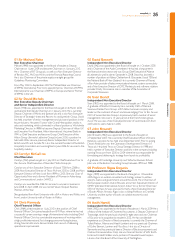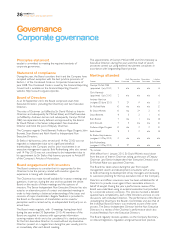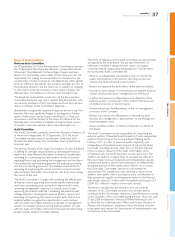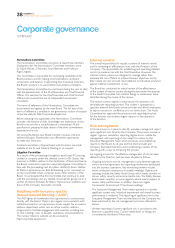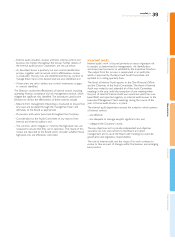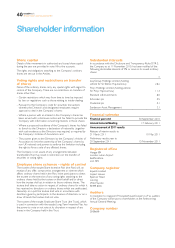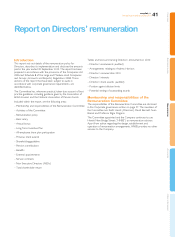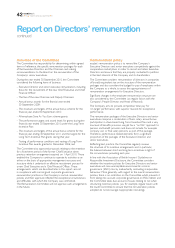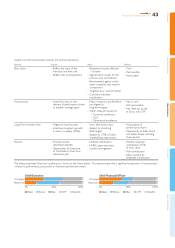EasyJet 2010 Annual Report Download - page 35
Download and view the complete annual report
Please find page 35 of the 2010 EasyJet annual report below. You can navigate through the pages in the report by either clicking on the pages listed below, or by using the keyword search tool below to find specific information within the annual report.
We believe that the main environmental challenge facing the industry
isto ensure that emissions are put on a downwards path. There is a
realrisk that if the industry does not achieve this on its own, it will have
growth constraints placed up on it. We have already seen suggestions of
this in the UK, where the Committee on Climate in its December 2009
report on aviation emissions suggested the growth of the industry would
need to be limited to 60% over the next 40 years to control UK emissions.
To ensure the industry does not face any articial constraints we need
to signicantly improve the efciency of ying, through step-changes in
technology and the right incentives to ensure that airlines and passengers
y as efciently as possible.
Delivering our environmental promises
Our promises revolve around actions we can take in the short-term to
directly improve the environmental efciency of our business and at the
same time working to deliver a sustainable long-term outcome for the
industry. The latter involves changing the framework within which the
industry operates to ensure it delivers sustainable outcomes.
easyJet’s actions
We are continually working to improve the environmental impact of
our current operations, by improving our fuel efciency. These measures
are incremental by nature, given that we operate under the constraints
of dened technology. We have a fuel efciency programme which is
continually monitored. While some of these measures save relatively
small amounts of CO2 per ight, as we average nearly 1,000 ights a day,
the total savings can be very large.
In 2010, our fuel efciency and therefore our environmental efciency,
improved by 1.6%.
Examples of this programme are:
– We have instituted a policy of using ground based power where
possible (rather than the Auxiliary Power Unit on the aircraft);
this is considerably more efcient;
– We have reduced the height at which the landing lights gear are
lowered on landing (reducing drag);
– We now use a single engine to taxi the aircraft before departure
and upon arrival at airports where it is possible to do so.
Entry into ETS
Aviation entered ETS in 2010, which is the monitoring year for the
reporting of our CO2 emissions and the Revenue Tonne Kilometres
own by easyJet. From 2012, we will be required to surrender permits
tocover CO2 emissions. We have put in place the required systems and
processes to ensure compliance with the monitoring and reporting plans
approved by the Environment Agency. An external verier, accredited
for aviation will be appointed in due course.
Changing the industry framework
Achieving step change in the environmental efciency of aviation will
require signicant progress in the development of next-generation
aircraft. Without signicant improvements in fuel efciency it will not be
possible to increase the rate of environmental efciency improvement.
We are concerned that the current effective duopoly in the production
of large commercial aircraft is restricting the development of next-
generation aircraft. Whilst there has been some discussion around
re-engineing current generation aircraft, this will at best deliver only half
the fuel efciency of a next-generation short-haul aircraft which appears
to be a decade away. We are continuing to press the manufacturers
tohasten the introduction of new technology.
It is also vital that the policy framework set out by governments supports
these objectives. We believe there are three parts to this, only one of
which is currently in place.
– Aviation in ETS
Aviation entered the EU Emissions Trading Scheme (EU ETS) in 2010,
and airlines will have to surrender permits in 2013 to cover their 2012
emissions. We were a strong supporter of aviation’s entry and we
continue to believe that this is the best way to ensure aviation makes
itsfair contribution to tackling climate change.
– Ensuring any taxes support environmental objectives
We do not support the imposition of aviation specic taxes. However,
where they are in place (such as the UK) we believe they must be
designed to provide incentives for more environmentally efcient ying.
This means the tax base must be ights, not passengers.
– Minimum standards for aircraft
International minimum standards are needed to drive the development
of new technology aircraft.
Overview Business review Governance Accounts Other information
33
easyJet plc
Annual report and accounts 2010


